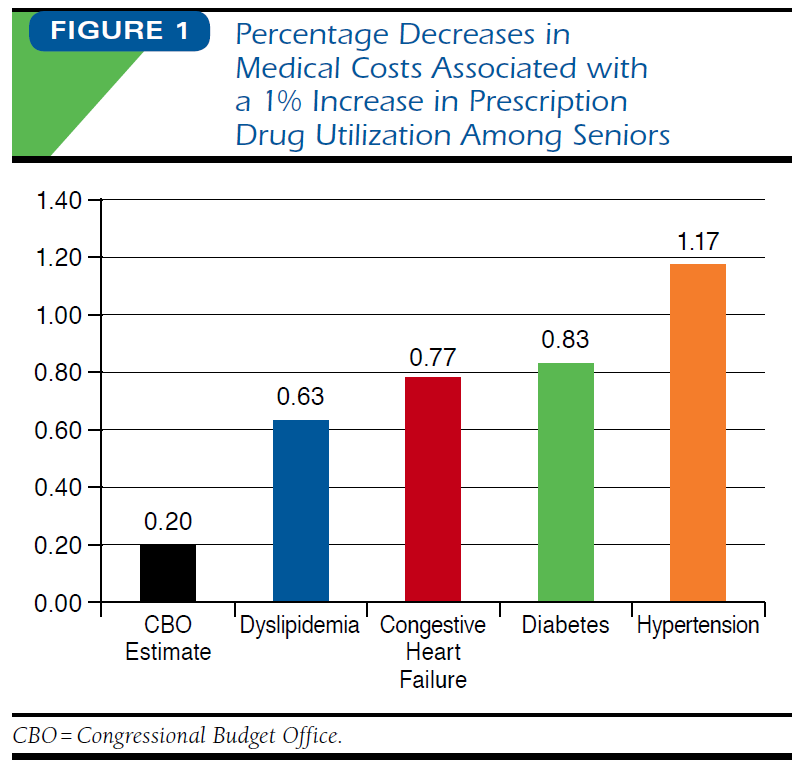A growing body of evidence shows increased utilization of medicines reduces spending on other medical services. The Congressional Budget Office (CBO) changed their methodology to account for the cost savings that can be achieved when beneficiaries adhere to their medicines. The CBO now estimates, “a one percent increase in the number of prescriptions filled by beneficiaries would cause Medicare’s spending on medical services to fall by roughly one-fifth of one percent.”
This week, a new study conducted by economist Christopher Roebuck and published in the Journal of Managed Care & Specialty Pharmacy, estimates the cost savings are even greater when seniors with chronic conditions adhere to their medications. “These results demonstrate that medical cost offsets from prescription drug utilization likely vary by chronic condition and that impacts for therapeutic classes used to treat these four conditions [dyslipidemia, congestive heart failure, diabetes and hypertension], which represent 40 percent of Medicare Part D utilization may be between three and six times greater than the CBO’s assumption,” the author wrote.
This chart highlights the cost savings that can be achieved with better utilization of medicines by seniors with chronic conditions:

An estimated $290 billion in U.S. health care expenditures add up from about half of patients not taking their medications as directed, avoidable adverse health events and use of medical services. The report notes, improvements in clinical and economic outcomes from medication adherence have been demonstrated across a variety of conditions and patient cohorts.
“The current findings suggest that a five percent increase in the use of antihypertensive medication by patients with those two conditions [hypertension and high cholesterol] may prompt reductions in medical (Parts A and B) costs of more than $800 annually per beneficiary,” according to the report.
Be sure to stay tuned to The Catalyst for more on efforts to bring down health care costs and ensure patients have access to the medicines they need.




